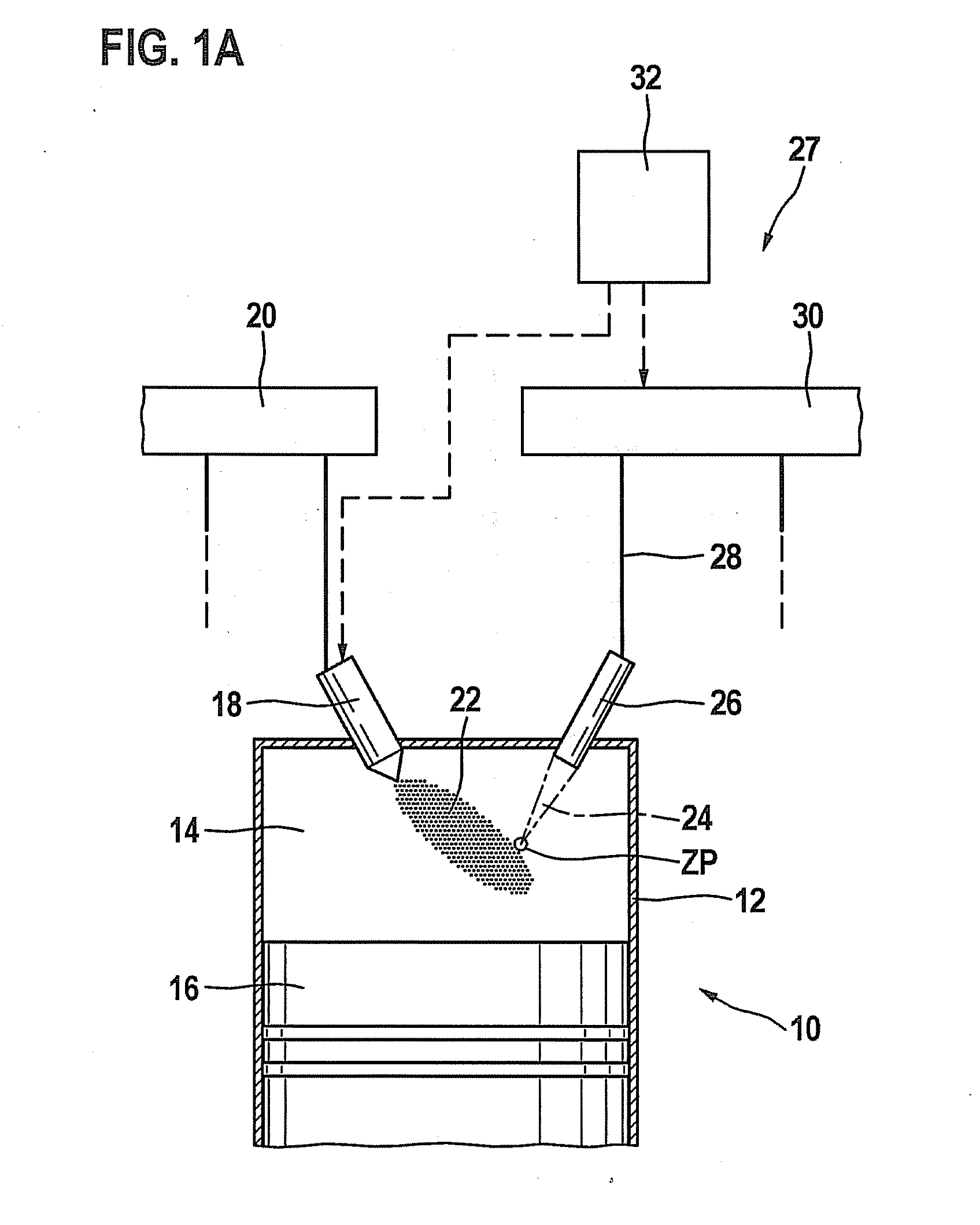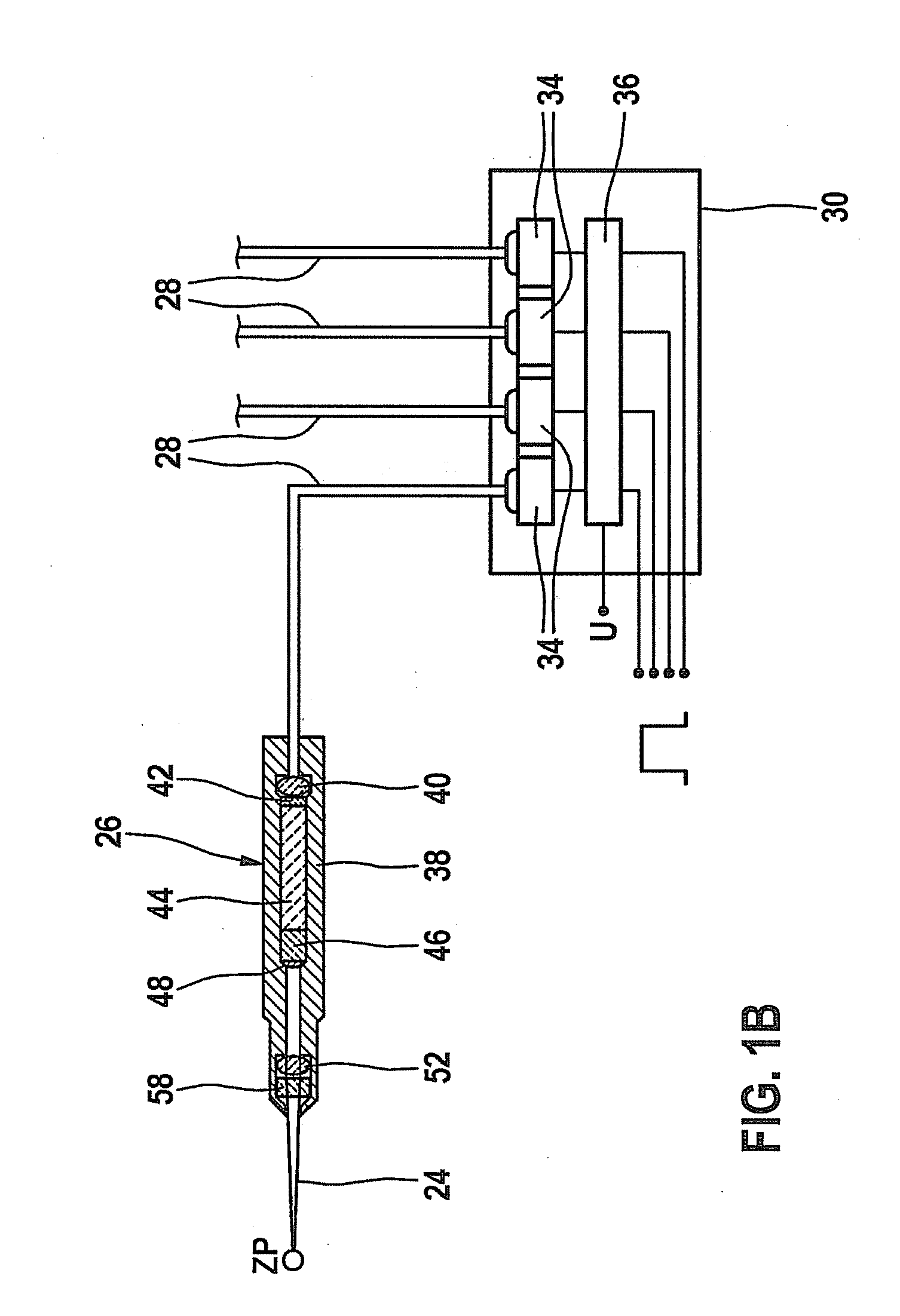Gas engine having a laser ignition device
a laser ignition and gas engine technology, applied in combustion engines, machines/engines, charge feed systems, etc., can solve the problems of reducing the efficiency of the internal combustion engine, high flow velocity and consequently high turbulence in the combustion chamber, and high wall heat loss, so as to achieve reliable and low-emission combustion and good efficiency
- Summary
- Abstract
- Description
- Claims
- Application Information
AI Technical Summary
Benefits of technology
Problems solved by technology
Method used
Image
Examples
Embodiment Construction
[0026]An internal combustion engine is labeled with reference numeral 10 on the whole in FIG. 1a. It may be used to drive a motor vehicle (not shown). Internal combustion engine 10 usually has several cylinders, only one of which is labeled with reference numeral 12 in FIG. 1a. A combustion chamber 14 of cylinder 12 is delimited by a piston 16. Fuel enters combustion chamber 14 directly through an injector 18, which is connected to a fuel pressure accumulator 20, also known as a rail. Alternatively, the fuel-air mixture may also be formed outside of combustion chamber 14, for example, in an intake manifold.
[0027]Fuel-air mixture 22 in combustion chamber 14 is ignited by a laser pulse 24 emitted into combustion chamber 14 by a laser ignition device 27, which includes an ignition laser 26. The ignition in combustion chamber 14 may also be prepared in an antechamber (not shown in FIG. 1) situated upstream from the combustion chamber. Ignition laser 26 is supplied via a fiber optic ligh...
PUM
 Login to View More
Login to View More Abstract
Description
Claims
Application Information
 Login to View More
Login to View More - R&D
- Intellectual Property
- Life Sciences
- Materials
- Tech Scout
- Unparalleled Data Quality
- Higher Quality Content
- 60% Fewer Hallucinations
Browse by: Latest US Patents, China's latest patents, Technical Efficacy Thesaurus, Application Domain, Technology Topic, Popular Technical Reports.
© 2025 PatSnap. All rights reserved.Legal|Privacy policy|Modern Slavery Act Transparency Statement|Sitemap|About US| Contact US: help@patsnap.com



